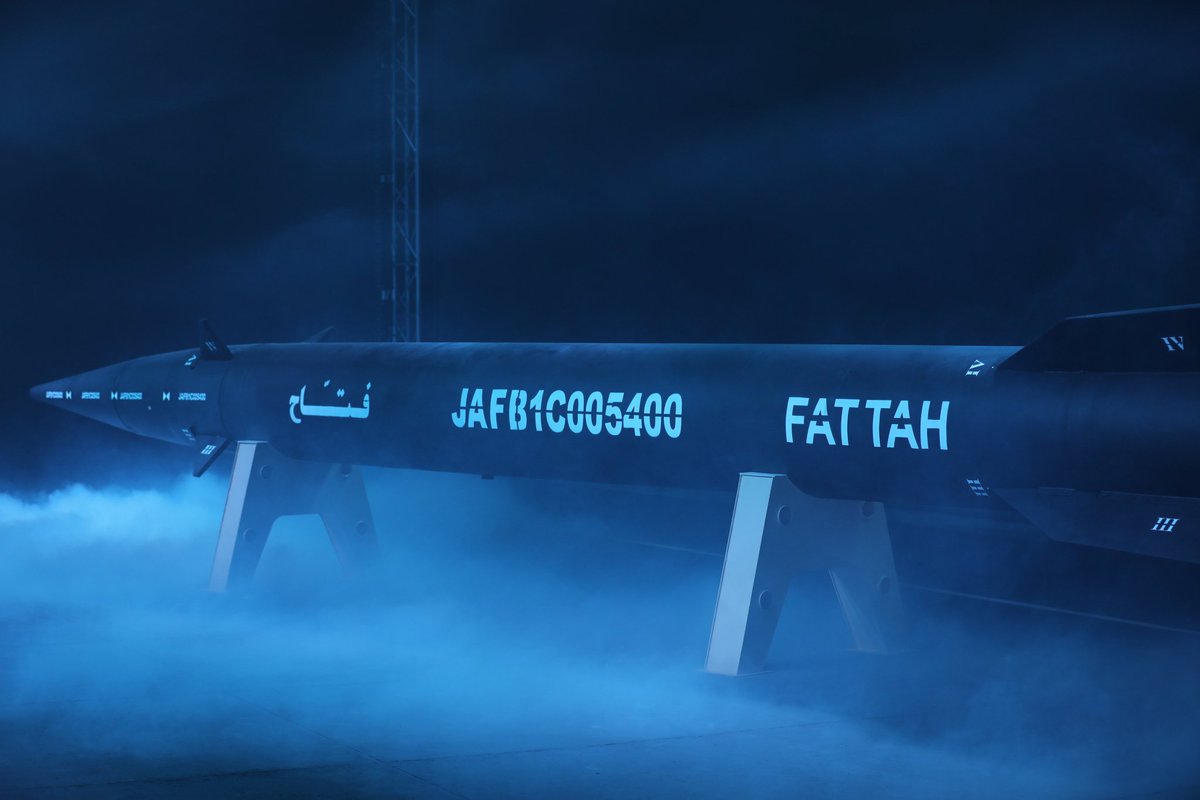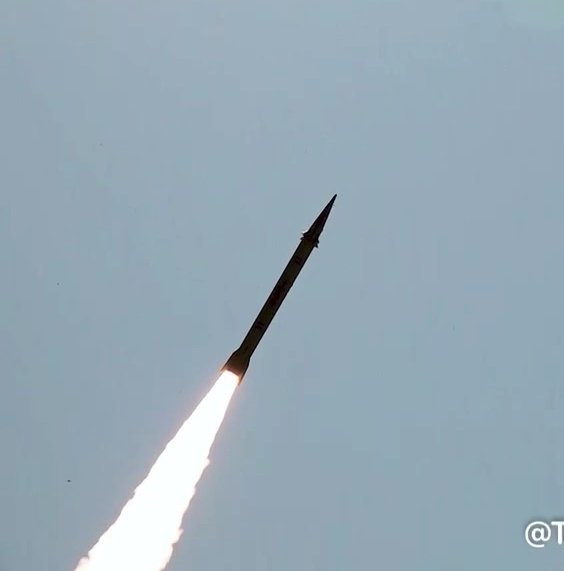Iran has unveiled its 'FATTAH' hypersonic ballistic missile, with a range of 1400km and maximum speed of Mach 15.
Instead of a high-lift HGV, it uses a speed-optimised MaRV with a thrust vectoring sustainer motor.
THREAD
Instead of a high-lift HGV, it uses a speed-optimised MaRV with a thrust vectoring sustainer motor.
THREAD

Before we get onto the MaRV, its pertinent to look at the first-stage booster. From the shape of the fins it looks based on the Kheybar-Shekan. It's launched at an angle (not vertically), implying a quasi-ballistic (mostly in-atmosphere) flight profile.


https://twitter.com/AmirIGM/status/1491783120877539339?t=2LBMklPCn-O-fjUxp7cv7A&s=19


This depressed trajectory means the MaRV can be controlled with fins, as on Fateh, Zolfaqar series, Raad-500, Kheybar-Shekan. However, sustained atmospheric flight significantly decreases speed and range. Fattah solves this problem with a solid-fuel, flex-nozzle sustainer motor. 

The sustainer motor is used to increase the duration of hypersonic flight, and its flex-nozzle conducts maneuvers in the upper atmosphere where the fins aren't very effective, but can still provide stabilisation. At lower altitudes the fins take over completely. 

Speaking of the MaRV, it's a significant departure from Kheybar-Shekan (3rd image). The nosetip is much narrower and the shape itself is much closer to a pure cone than the triconic Kheybar-Shekan. Again, heavy emphasis on speed over lift-drag rato. 





Ultimately this results in a high-performance depressed trajectory missile capable of maneuvering at sustained hypersonic speeds. The low-lift warhead is not designed to "go around" ABM radars, which would be futile in the ME which is saturated with them (especially Israel). 

The MaRV can attack ABM by confronting them at reduced altitude and massive speed, minimising detection range and reaction time. The fins and TVC are sufficient to make high-G maneuvers at a kinematic advantage.
The next step for Iran is arrowhead-shaped HGVs like HTV-2 and DF-17. These designs have a high lift-drag ratio and could cruise at lower altitudes for longer periods. Useful in anti-ship role, where ABM radars are more scarce and avoiding detection is possible. 



Customary Iranian_BM_hitting_a_small target.mp4
https://twitter.com/projectmeshkat/status/1666060851701219328?t=hVCFwODsand0QRYWdL4ZRQ&s=19
• • •
Missing some Tweet in this thread? You can try to
force a refresh
























